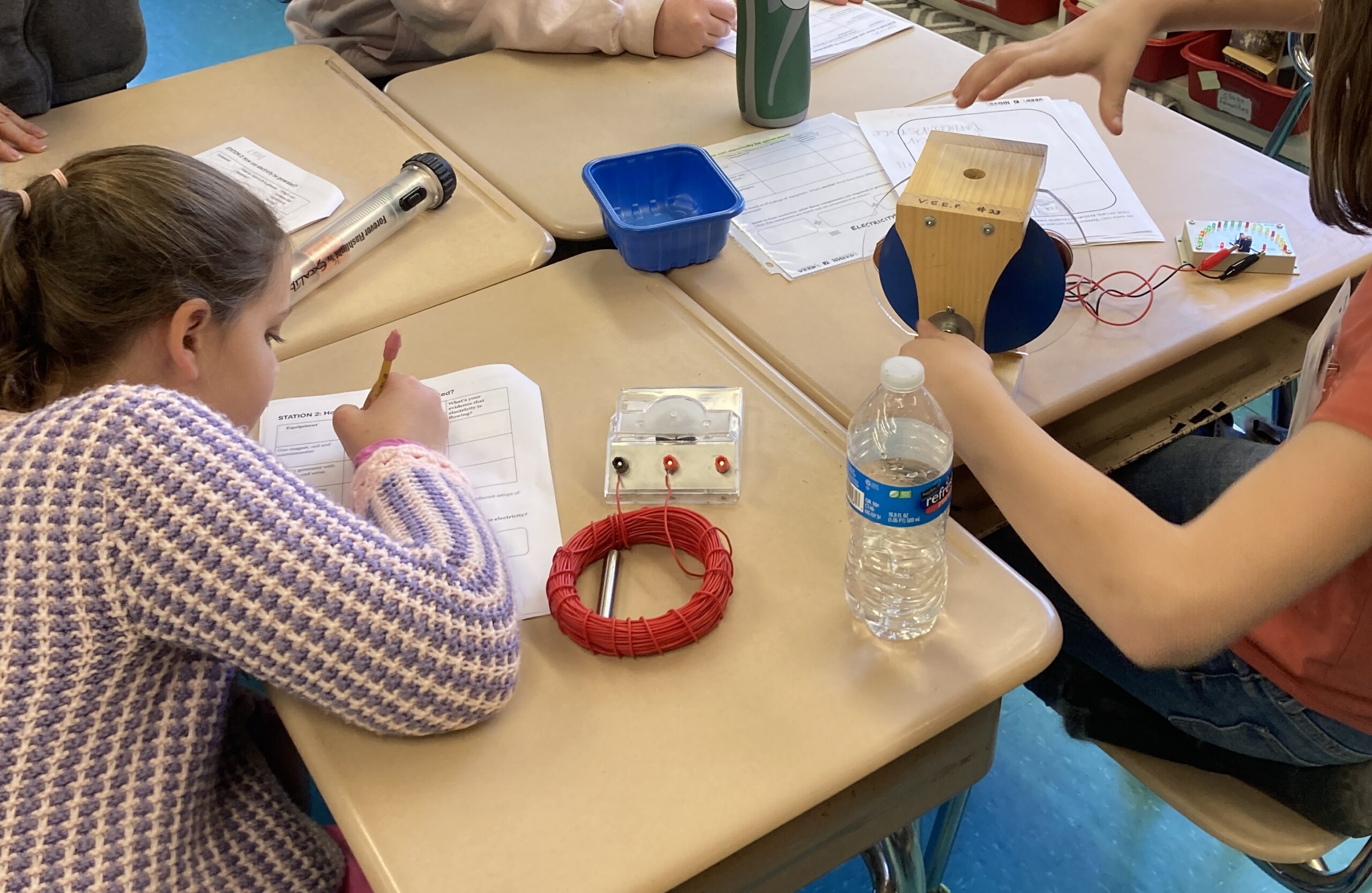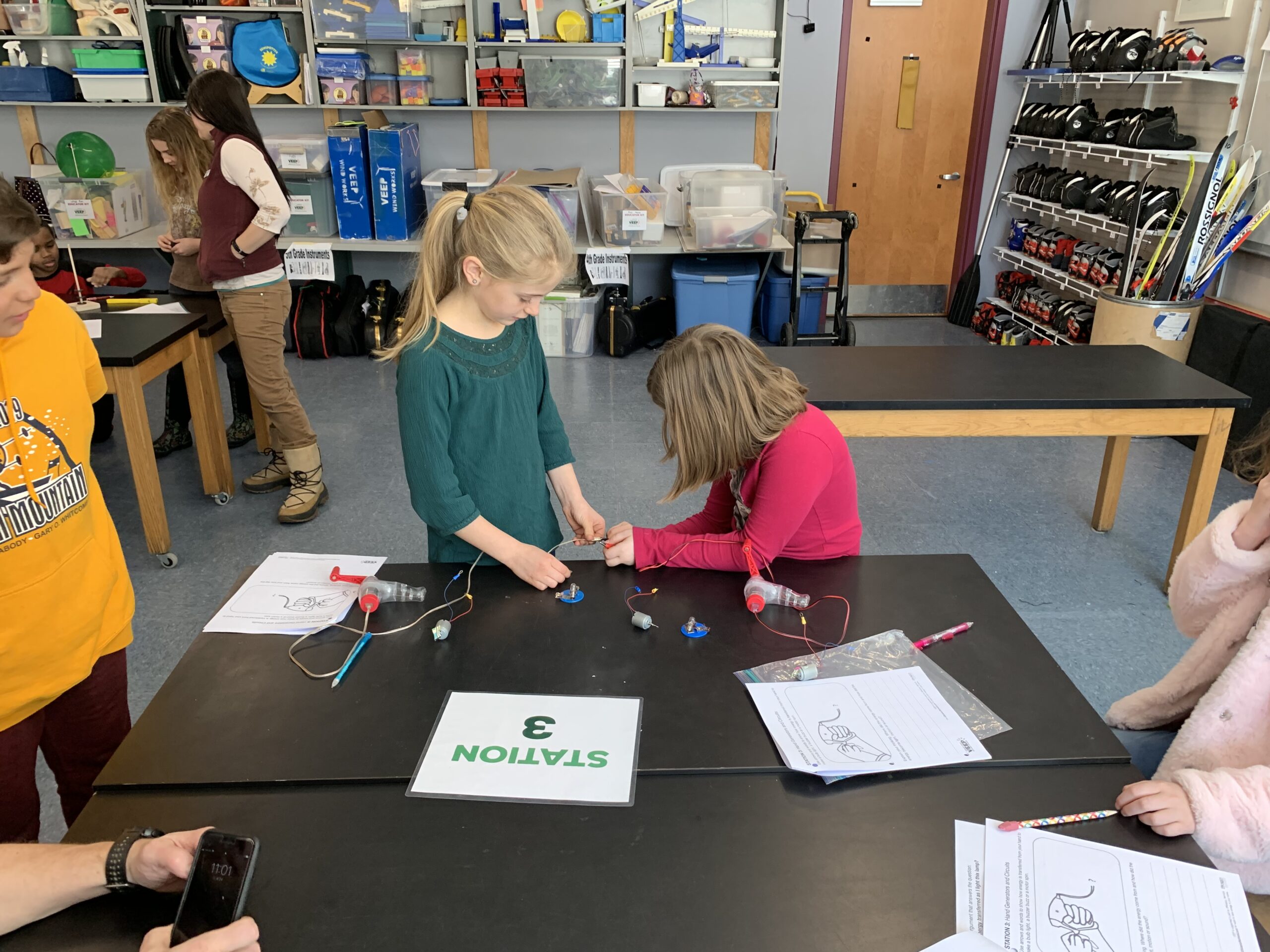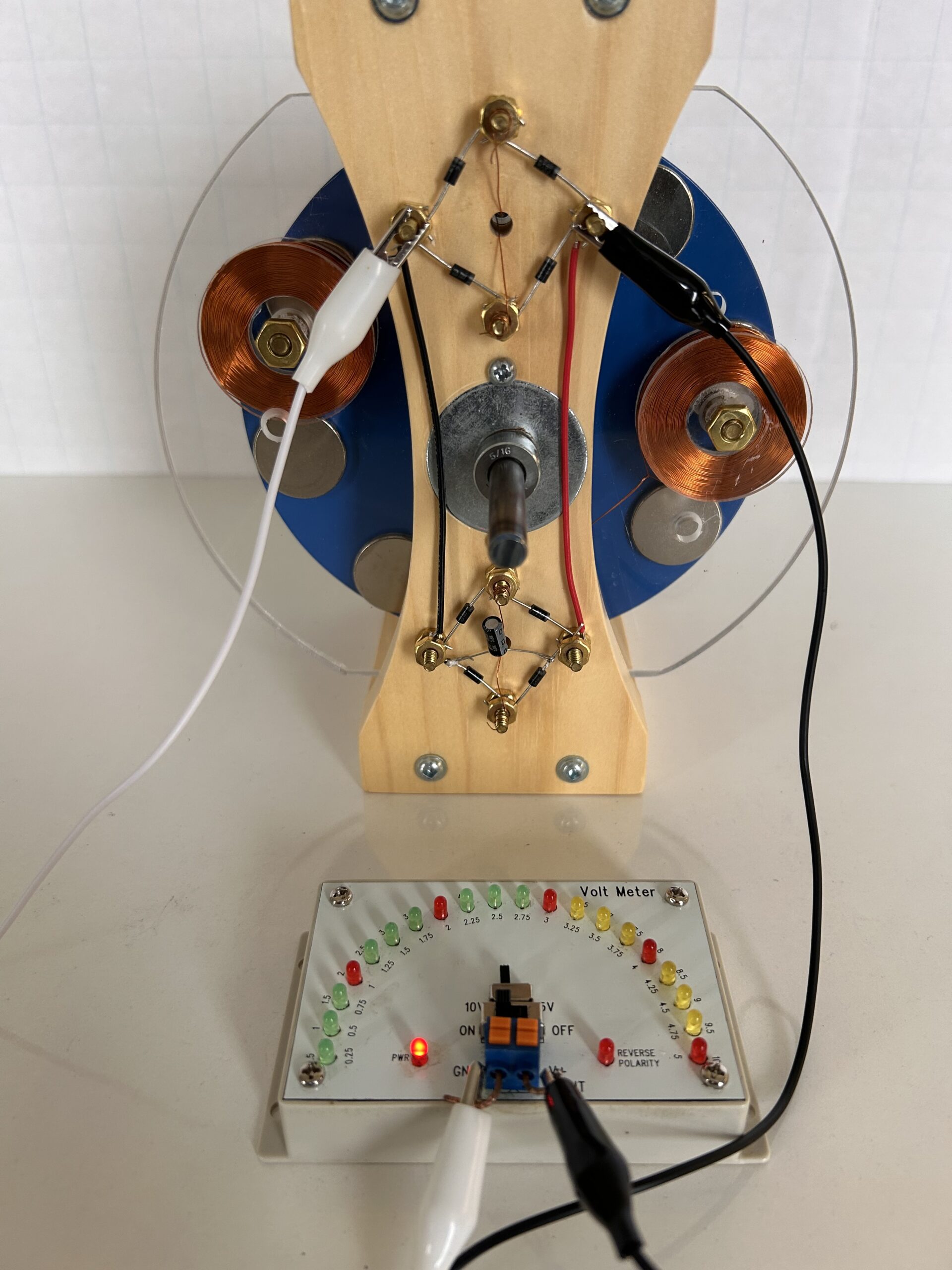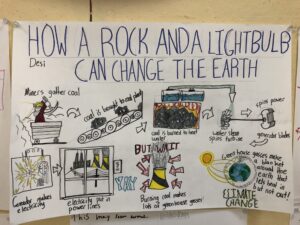$40.00
How is energy transferred? How does the way we generate and use electricity impact our environment?
Description
One of our traditional workshop kits available for teachers to borrow.
Your VEEP/NHEEP educator will supply you with a lesson plan and personalized support as you use this equipment.
Grade 4: How is energy transferred as I light this lamp? Students will explore circuits and electricity generation to provide evidence that energy can be transferred from place to place by electric currents. Students will begin to understand how they can take action to save energy, and that all energy use has an impact on our environment.
What’s in the kit? wooden generator, voltmeter, alligator leads, magnets, shake flashlight, hand crank generators, motors, mini light bulbs, battery bulb and wire packets, VEEP light board, electricity generation cards.
Grade 5: How does the way we generate and use electricity impact our environment? What can we do to reduce our negative impacts? Students will explore ways electricity is generated from earth’s natural resources and the impact that electricity generation has. Students will explore renewable energy and how different ways of generating electricity have different impacts on earth’s spheres, with the goal of designing action steps to reduce impacts of electricity generation.
What’s in the kit? Hand crank generators, shake flashlight, wooden generator, magnet, VEEP light board, PV panel station, wind turbine station, electricity dice, electricity pie charts.
Grade 6-10: How can we decrease the negative environmental impacts of our electricity use? What can we do in our homes? Our school? Our communities? Students will Understand the factors that affect electric and magnetic forces using Faraday’s Coil. Use data on consumption of natural resources and to understand how they impact Earth’s systems, and design a SMART goal to decrease personal consumption of electricity to offset these impacts.
What’s in the kit? Electricity cards, magnets, shake flashlight, appliances and kill-a-watt meters, electricity posters, light board, climate goals posters.
TIME COMMITMENT: 2-5 CLASS PERIODS
Additional information
| Topic | |
|---|---|
| Type of Material | |
| State | |
| Grade Band | |
| Sponsored Products | NHSaves |
Teacher Reviews
What teachers had to say:
Standards Addressed
NGSS STANDARDS
4th Grade
4-PS3-2: Make observations to provide evidence that energy can be transferred from place to place by sound, light, heat, and electric currents.
5th Grade:
5-ESS2-1: Develop a model using an example to describe ways the geosphere, biosphere, hydrosphere, and/or atmosphere interact.
5-ESS3-1: Obtain and combine information about ways individual communities use science ideas to protect the Earth’s resources and environment.
6-10 Grades:
MS-ESS3-3: Apply scientific principles to design a method for monitoring and minimizing a human impact on the environment.
HS-ESS3-2: Evaluate competing design solutions for developing, managing, and utilizing energy and mineral resources based on cost-benefit ratios.
HS-ESS3-4: Evaluate or refine a technological solution that reduces impacts of human activities or natural systems.




